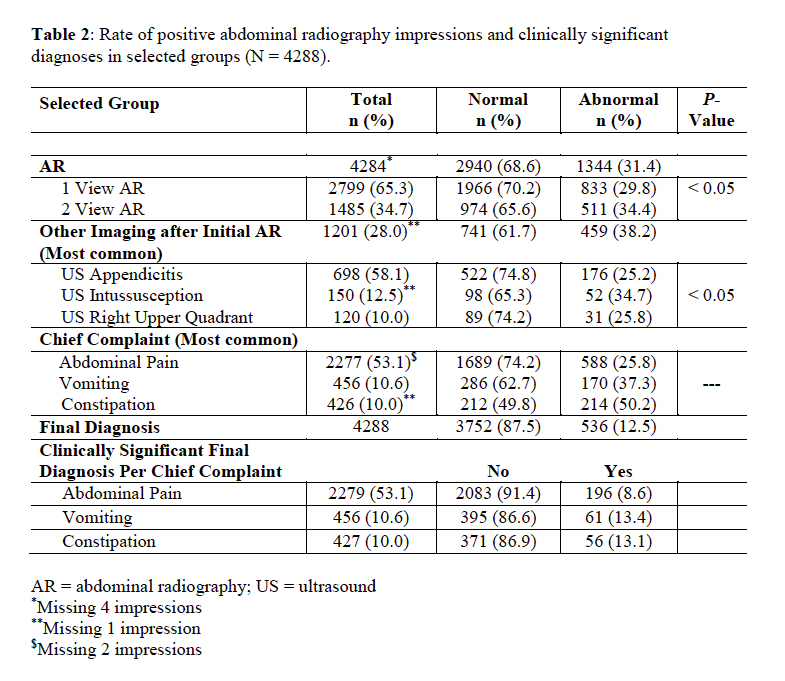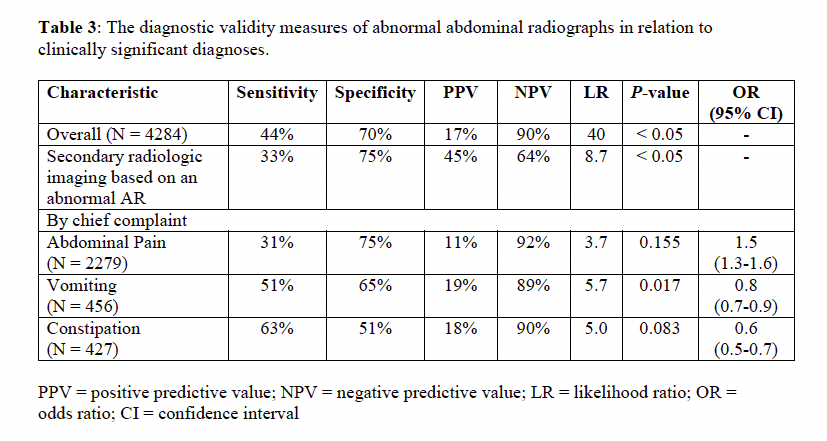Emergency Medicine: All Areas
Emergency Medicine 12
491 - Diagnostic Yield of Abdominal Radiographs in the Pediatric Emergency Department
Publication Number: 491.311

Andrea Rivera-Sepulveda, MD, MSc
Physician
Nemours Children's Hospital
Orlando, Florida, United States
Presenting Author(s)
Background:
Abdominal radiographs (AR) are commonly used in the pediatric emergency department (PED). Their low diagnostic accuracy leads to overuse, excess radiation exposure, and increased resource utilization.
Objective:
This study aims to assess the diagnostic yield of ARs in the evaluation of intra-abdominal pathology in the PED.
Design/Methods:
Retrospective, cross-sectional study of patients 0–18 years old with an AR who visited the PED between 2017 and 2019. Diagnostic yield was analyzed with sensitivity, specificity, positive predictive value (PPV), negative predictive value (NPV), and likelihood ratio (LR).
Results:
A total of 4288 ARs were identified, with a rate of 6%. The overall abnormal AR rate was 31%. The incidences of an abnormal AR in abdominal pain, vomiting, and constipation were 26%, 37%, and 50%, respectively. There was a 13% rate of clinically significant diagnoses. AR diagnostic yield showed 44% sensitivity, 70% specificity, 17% PPV, and 90% NPV (P < 0.05). Unadjusted odds ratio (OR) analysis of positive AR and abdominal pain, vomiting, and constipation revealed an OR of 0.68 (95% CI 0.63-0.75), 1.22 (95% CI 1.06-1.39), and 1.72 (95% CI 1.54-1.91), respectively.
Conclusion(s):
There is a low rate of intra-abdominal pathologic processes that an AR can identify. A normal AR does not change patient management, nor does it reduce the need for further radiologic imaging. Despite a good NPV, the AR is not a useful diagnostic tool in the PED because of its limited ability to rule in or rule out clinically significant diagnoses.

